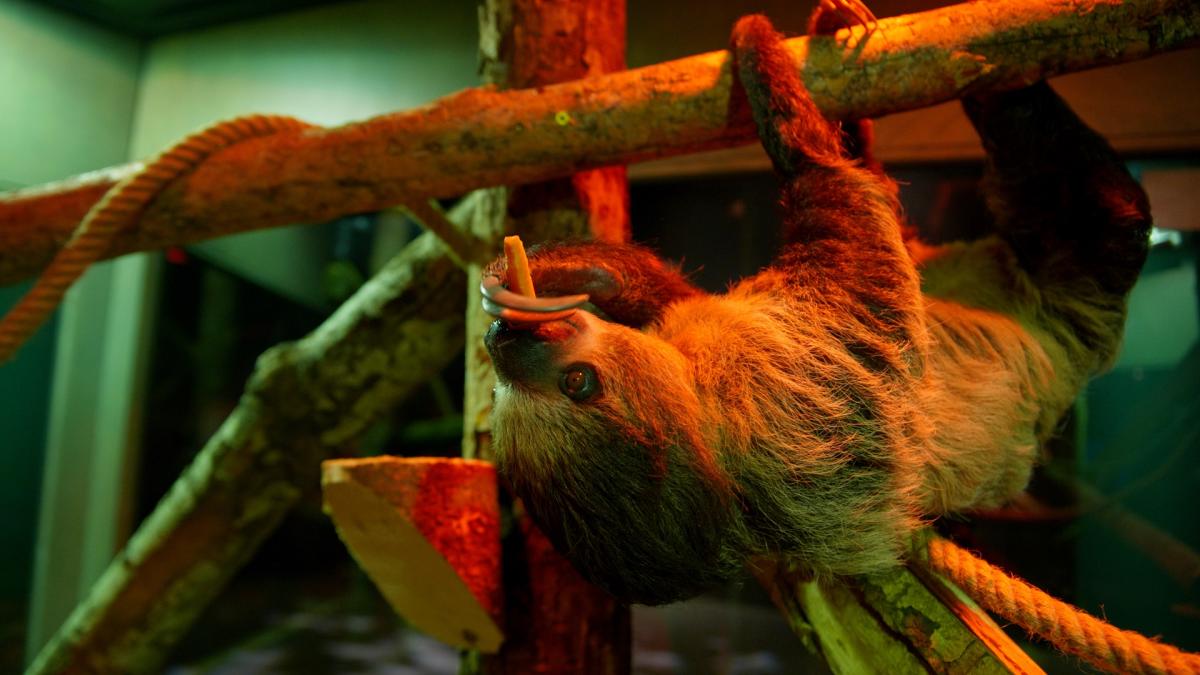Attention Groundhog Day blog fans! We heard you. Your cries for critter content were deafening. Although to be entirely fair, we’re pretty sure at least some of the social media accounts are just burners held by our Copywriter. Nonetheless, critter content incoming!
Everyone loves an underdog story. Rudy, Rocky—heck—even Jordan and those cartoons on the Tune Squad. Locally, you’ve got the triumphant tale of Gertie the duck, the Brewers chasing down the Cubs in 2018 to capture the N.L. Central, and the Bucks overcame a 2-0 deficit against the Nets in the Eastern Conference Semifinals en route to their first championship in 50 years. Unlikely protagonists overcoming overwhelming odds in an inspiring feat—there’s just something about the triumph of the spirit that warms the soul.
This week, the Milwaukee Public Museum just unveiled an exhibit featuring nature’s most successful underdogs.

The Survival of the Slowest exhibit showcases several of these resilient species throughout the open space. Organized by categories like speed, size, fitness, and slow and steady, 19 habitats featuring animals of all different species with everything from horned frogs to the dangling sloth.
Jon Bertolas, the exhibit’s on-site curator, provided some background on the space. He shared that, oftentimes we think of adaptations as changes to a species that makes them bigger, faster, or stronger. However, this exhibit focuses on the seemingly counterintuitive adaptations made by the species represented throughout the museum to ensure their survival. Some of these are well known, such as the hard keratin shells of the mighty tortoise. Yet, others are curiously effective like the Ball Python that tucks itself into a ball and hides to protect itself from hungry predators.
Throughout the space, learn about the many animals and their clever adaptations to help them overcome the odds to survive as a species from the naturally closed fists of the sloth used to cling to tree branches to the naturally protective quills and ability to curl into a ball for protection of the hedgehog.
This is not the museum’s first live animal exhibit. The Milwaukee Public Museum curated Spiders Alive in 2019, dispelling the myths about a typically misunderstood species. Bertolas did note that Survival of the Slowest is a phenomenal companion piece to the Rainforest exhibit, located on the first floor. At Survival of the Slowest, explore the evolutionary adaptations of these animals, then immerse yourself in the Rainforest exhibit to learn about some of their environments.
In talking about the tie between the live exhibition and the museum, he explained that one thing many people don’t realize is the museum has a team of researchers tasked with studying adaptations and adjusting exhibits based on new discoveries. He pointed to Dr. Nick Dowdy and his work on what he referred to as the bats and moths arms race. Due to their short lifespans, moths adapt very quickly through the generations. From an audio standpoint, this causes a fascinating phenomenon of moths jamming the sonar of bats through the sounds they make.
When discussing the museum, some of the highlights include the grey rat snake, an arboreal serpent that is sure to be one of the livelier enclosures as well as the tarantulas, and, of course, the two-toed sloth. Spend an afternoon watching and learning about these tremendous underdogs and marvel at the perseverance of these species. After all, life always finds a way.
No matter how long you spend at the Milwaukee Public Museum, there’s always more to dis cover throughout the building’s three floors. Plan your visit today!
The Survival of the Slowest exhibit runs from February 11 through May 19.






